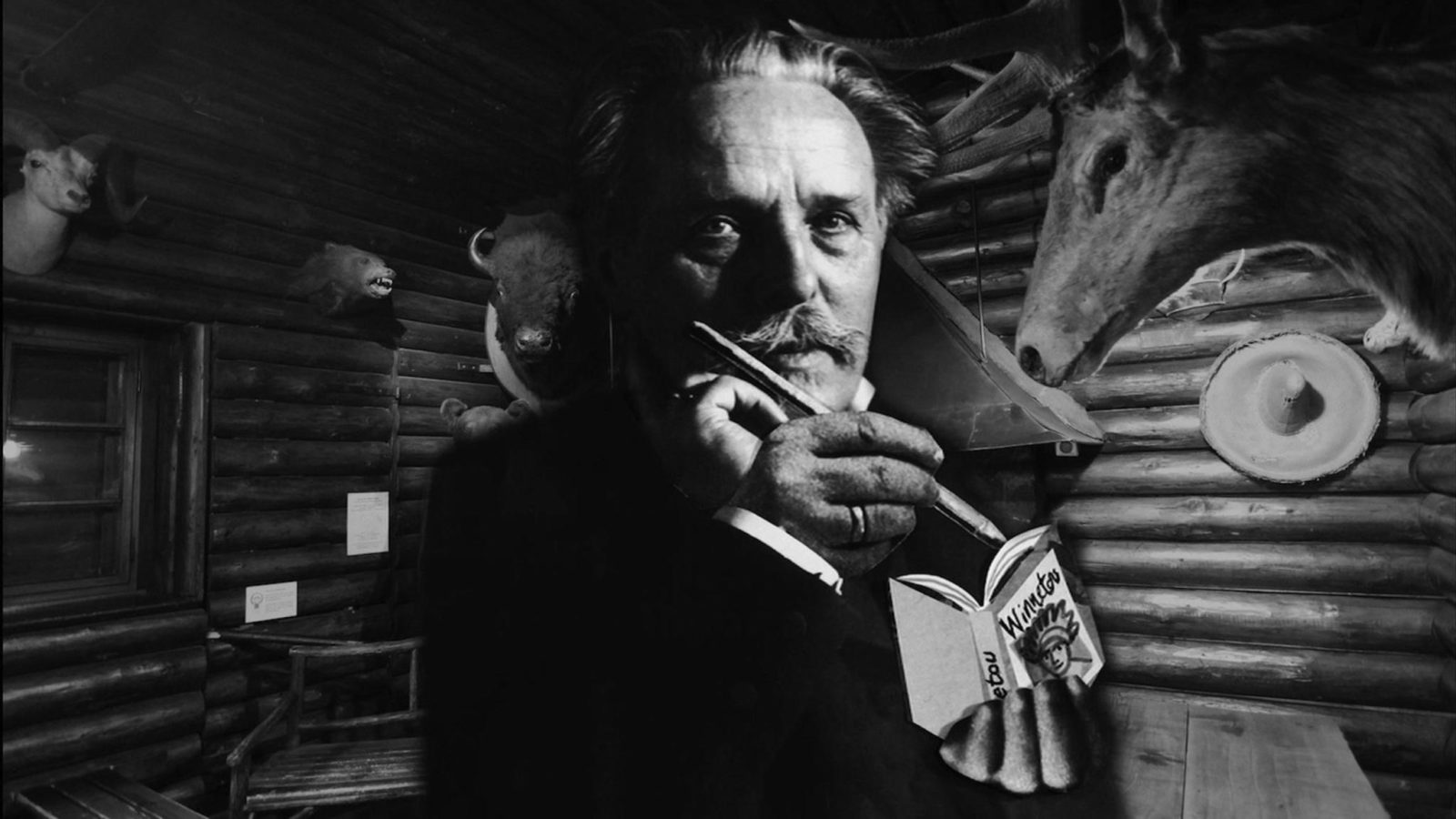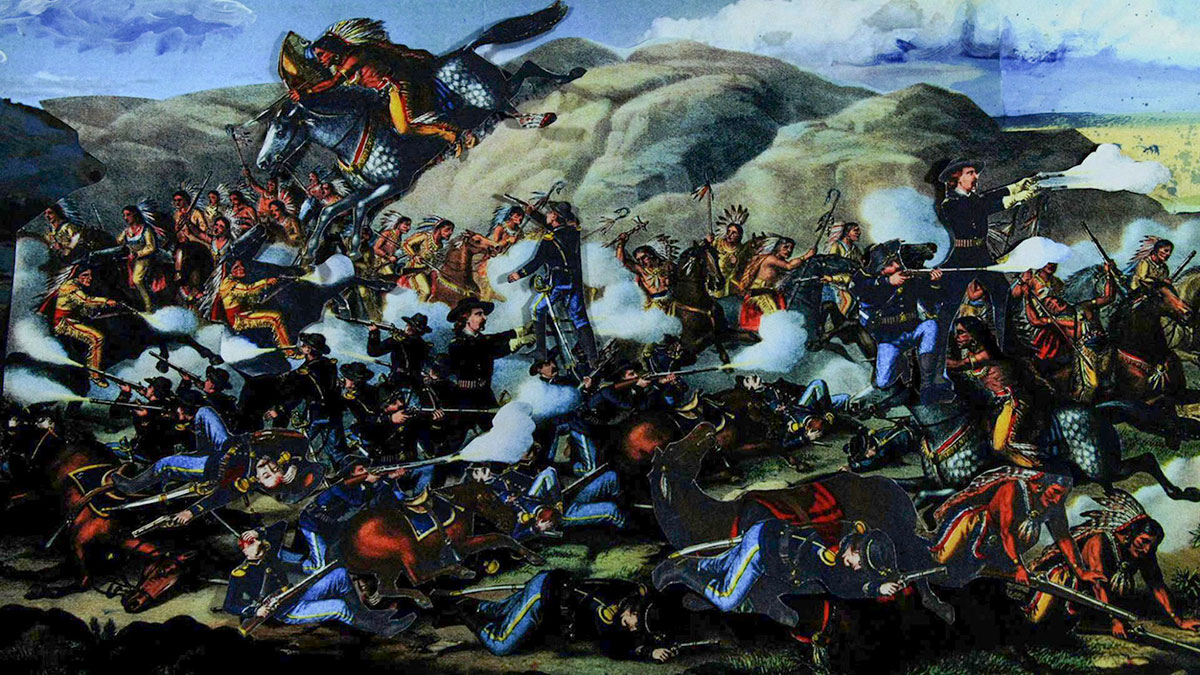Martha Colburn Explores a German Author Through Stop-Motion Animation and Documentary

Martha Colburn embraces all mediums to tackle serious topics like war, drug addiction and gun violence. She spends long periods of time researching subjects, and even longer periods making the work—her dense stop-motion animations reveals the attention and care behind her process. Martha has recently focused on the life and work of Karl May, a German adventure writer from the late 19th Century who wrote novels about the American Old West. Her Creative Capital Project Western Wild… or how I found wanderlust and met Old Shatterhand—a documentary about the making of a film about Karl May—premieres at MoMA’s Doc Fortnight on February 18. We caught up with Martha to find out more about the new work.
We spoke to Martha Colburn just before the premiere of her project at MoMA.

Image still from Western Wild…
Alex Teplitzky: Karl May is a German author who wrote adventure novels set in the American Old West. He had never been there, even though he told everyone he had. He’s well known in Germany, but not in the US. How did you find out about Karl May?
Martha Colburn: In the mid 1990s I had a drummer named Steven Garling arrive at my loft in Baltimore to play a percussion and silent cinema show. He was dressed as a cowboy and drove a taxi cab he bought in New York for the tour, with a dashboard covered with wild west toys. Steven was, looking back, a living “hobbyist,” or someone who lives as a cowboy or Native American Indian inspired by the tales of Karl May. I made a Super 8 film of him in various cowboy poses. I now use this film in my “expanded cinema” version of my film called Wanderlust West.
I went on a journey to make my film about Karl May in Europe—perhaps the same way Steven was touring America—living an American dream.
Martha: It was like a puzzle to put together why I found this man’s work as a subject for a film and I realized it was more his life than his writing that was interesting to me. I knew I had to go on a journey before I could make a film about someone with such a strikingly different life than my own. His journey was in his mind—first in prison and then in Kaiser Willem’s Germany (then called Saxony), writing adventure stories for the public to live through his characters that explored the Wild West.
At the end of my journey, I realized that I was a puppet to my film as much as a puppet maker—that there was a film within my life and my life within the film and that, like Karl May, a thin line had formed between the imagined and the real. In a moment of reflection on this, I made a short autobiographical film in an attempt to understand my own source of wanderlust and quickly realized that out of all the difference I had felt with my subject of Karl May, that this was where our paths crossed.
Alex: The title has changed from Western Wilds to Western Wild… or how I found wanderlust and met Old Shatterhand. So has the film shifted directions in the making of it?
Martha: When I wrote the essay on Karl May for the Creative Capital Award application, I was winding up the end of what could be considered little less than a “sentence” inside of my room in Queens, animating for seven years behind double bars on my windows and a dangerous world outside. I was unable to realize any semblance of a “real life” under the conditions, so I created imaginary ones. This is what Karl May did as well, and he went on to become Germany’s best-selling author. He never went to America except at the end of his life (to Niagara Falls).
I went to his home outside of Dresden, Germany, after visiting my family home in Pennsylvania. When I was in Dresden, it was as if I had never left my home—as his is full of taxidermy, firewood and guns. Guns and gun violence in America have been a subject in this project since the beginning for me when I wrote an essay or a list of gun violence I have personally experienced and read it at the Creative Capital project presentations. This is the first film I have ever told my own story and the first time I have ever done any voice-over on my animation.
My story makes a contemporary and personal parallel to this author who had died over 100 years ago. What changed in me during the making of this film was mostly the realization that I have a voice and a story to tell.
trailer for ‘Western Wild…or how I found wanderlust and met or Shatterhand’ from Martha Colburn on Vimeo.
Alex: We love works that are interdisciplinary, and Western Wild… seems like this kind of work: The film is animation, as well as live documentary, but also you’ve talked about making a performance and an installation. Why is it important to show this work in different contexts?
Martha: I’m a painter, musician, writer, and an animator and all of these converge in my project for Creative Capital. I make films from the margins, from my room (wherever I am living), from found and created materials and experiences. It’s a “kitchen sink” approach, like a patchwork quilt or a puzzle.
I didn’t see any boundaries of materials or expression when making the film and performances, and this is how the desire to make films keeps growing. Hand craftsmanship is important to me and it remains a constant, as well as a sense of discovery. As animation gives life to lifeless materials, I treat this whole project like an evolving idea, which still has potential to grow in new directions and re-create itself.
Alex: We recently interviewed Narcissister about the premiere of her Creative Capital Project Narcissister Organ Player, and it came up that you provided the animation for it! How did that collaboration come about?
Martha: I had seen (and was fascinated and impressed) by Narcissister performances when I was living in Long Island City. I saw her project, Organ Player, and presentation at the Creative Capital Retreat, and suggested that I could animate her. I wanted to make anatomical films and I immediately related this to her project. While I was experiencing my Wanderlust, and still searching in my own filmmaking, I was able to make animated footage for her project under her detailed instructions.
So detailed were these instructions, all of which took place inside her bodily organs, that I would have to record them and listen back, and take notes. I had such a strong belief in her film, intuitively, without even really knowing precisely what it was about. She gave me something to believe in and to give myself artistically to entirely, while I was searching in my own life and work.

The support of Creative Capital gave me the time to contribute to another artist’s work, which I strongly believed in. I wanted to make animation to activate other (and highly respected) artists’ ideas, outside of myself, to escape, and for a long, hot summer, I animated “inside of” Narcissister.
Now, using our conversations and documentation of our collaboration, I hope to cycle this back into my next film/performance/art project, that is about the history of Human Dissecting theaters (known as anatomical theaters) and the art of animation.
Her film, Organ Player, is amazing and I hope we continue to share ideas.
Alex: Speaking of Creative Capital’s support, how has it been helpful in the development of this project?
Martha: There’s a sense of teenage angst in my film Western Wild…, and I relate my teenage angst in the mountains of Pennsylvania to Karl May, living under Kaiser Willem’s regime. I felt angst when I began this project, I wanted to make something new, to invent a new form of storytelling for myself, and this required a journey.
Creative Capital afforded me the time and support to go on a journey and this became part of the film, which is also a travelogue. The root idea behind my film is that art is something through which we experience the world, real or imagined, and that it is the one thing that represents freedom regardless of whatever confines we are faced with.
Read more about Martha Colburn and her work on her website, and purchase tickets to see the premiere of her Creative Capital Project at MoMA on February 18.
